The Pool of Bethesda was a pool in Jerusalem known from the New Testament story of Jesus miraculously healing a paralyzed man; from the fifth chapter of the Gospel of John; where it is described as being near the Sheep Gate; surrounded by five covered colonnades or porticoes. In fact, it is now associated with the site of a pool in the current Muslim Quarter of the city; near the gate now called the Lions’ Gate or St. Stephen’s Gate and the Church of St. Anne, that was excavated in the late 19th century.
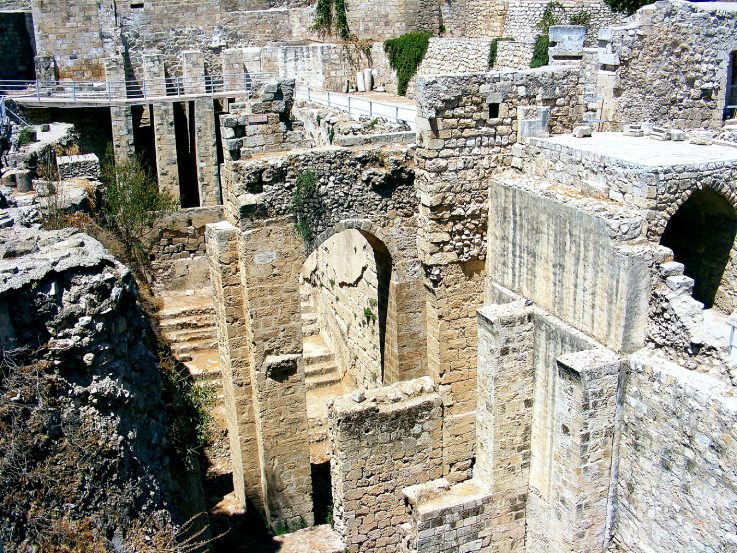
A Little More About the Pool of Bethesda
According to the Gospel of John, the Pool of Bethesda was a bathing pool with five porticoes.
Until the 19th century, there was no clear archaeological evidence for the existence of such a pool; which prompted some Western scholars to argue that the gospel was written later; probably by someone without first-hand knowledge of the city of Jerusalem, and that the pool had only a symbolic, rather than historical, significance.
Church of St. Anne
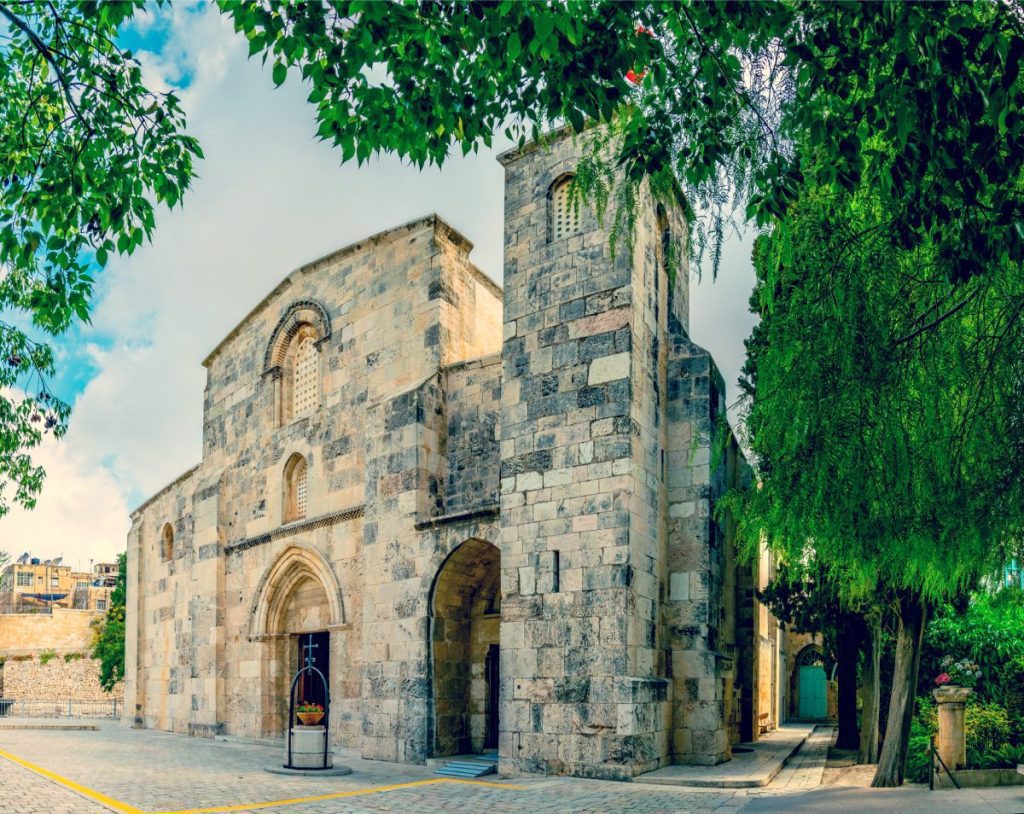
However, as early as the fifth century, there was a Byzantine church in what became the precincts of the Church of St. Anne, called the Church of the Probatic. This site, as subsequently excavated by archaeologists; seems plausible to fit the description in John’s Gospel.
The pool of Bethesda: Archaeological Digs
So in the archaeological digs conducted in the 19th century; Conrad Schick discovered a large tank situated about 100 feet (30 m) north-west of St. Anne’s Church, which he contended was the Pool of Bethesda. Further archaeological excavation in the area, in 1964, uncovered the remains of the Byzantine and Crusader churches; Hadrian’s Temple of Asclepius and Serapis; the small healing pools of an Asclepeion, the second of the two large pools, and the dam between them. It was discovered that the Byzantine construction was built in the very heart of Hadrian’s construction and contained the healing pools.
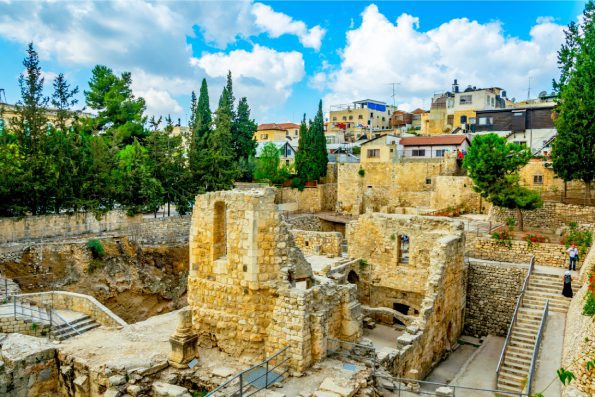
The pool of Bethesda: The Gospel Account
The Johannine text (chapter 5) describes the porticoes as being a place in which large numbers of infirm people were waiting; which corresponds well with the site’s apparent use in the 1st century CE as an Asclepeion. So the biblical narrative continues by describing a Shabbat visit to the site by Jesus; during which he heals a man who has been bedridden for many years and could not make his own way into the pool. Furthermore, the healing, and Jesus’ instruction to the man to take up his mat; prompt a protest that the religious customs of the Sabbath have been broken.
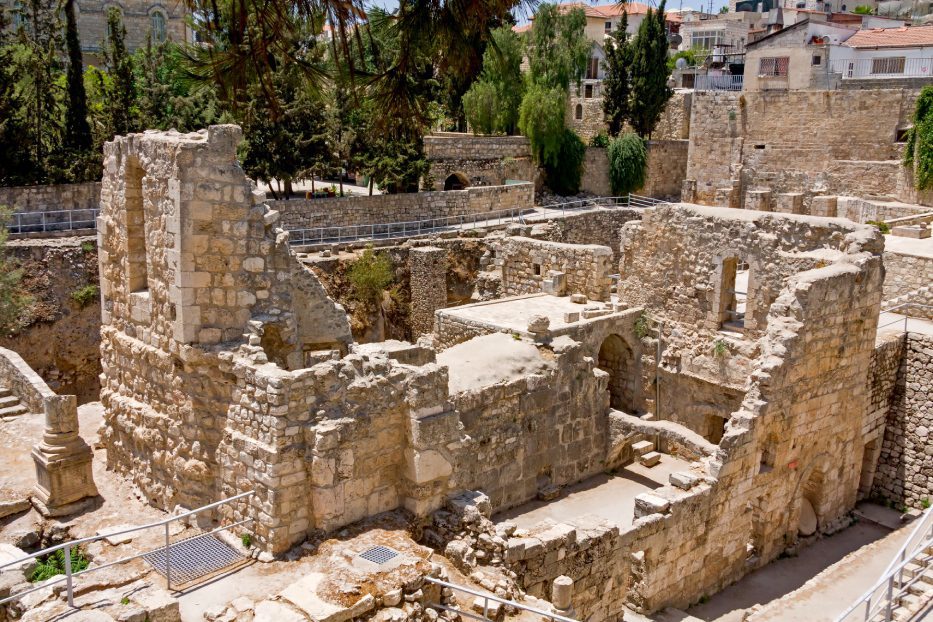
The pool of Bethesda: History
First (Northern) Pool of Bethesda
So the history of the Pool of Bethesda began in the 8th century BCE; when a dam was built across the short Beth Zeta valley; turning it into a reservoir for rainwater; a sluice-gate in the dam allowed the height to be controlled, and a rock-cut channel brought a steady stream of water from the reservoir into the city. The reservoir became known as the Upper Pool.
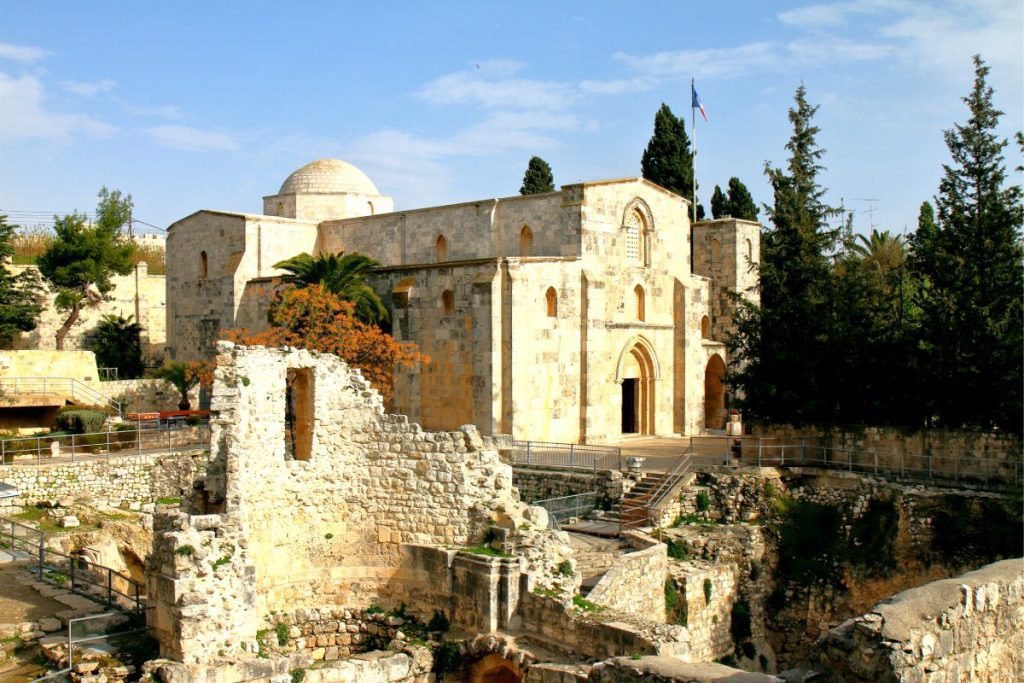
Second (Southern) Pool
Around 200 BCE, during the period in which Simon II was the Jewish High Priest; the channel was enclosed, and a second pool was added on the south side of the dam. Although popular legend argues that this pool was used for washing sheep; this is very unlikely due to the pool’s use as a water supply, and its extreme depth (13m). There has been some scholarly debate about whether the pool may have been a mikveh (Jewish ritual bathing pool).
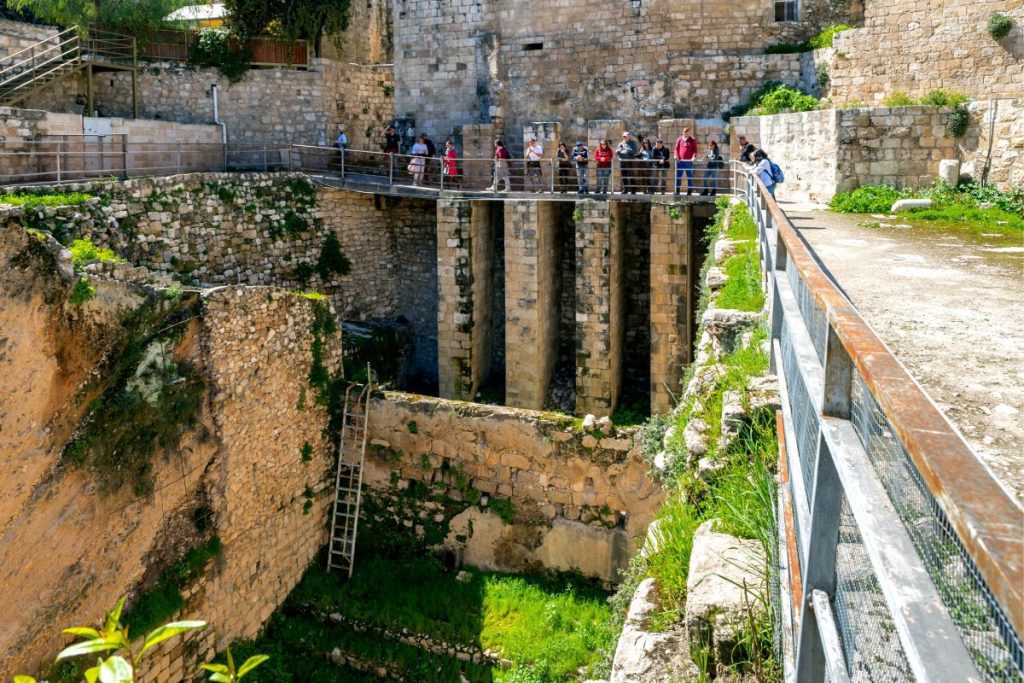
Hellenistic and Roman Temples
In the 1st century BCE, natural caves to the east of the two pools were turned into small baths; as part of an Asclepieion; however, the Mishnah implies that at least one of these new pools was sacred to Fortuna, the goddess of fortune, rather than Asclepius, the god of healing. Scholars think it likely that this development was founded by the Roman garrison of the nearby Antonia Fortress, who would also have been able to protect it from attack. Also, the Asclepieion’s location outside the then city walls would have made its presence tolerable to the Jews, who might otherwise have objected to a non-Jewish religious presence in their holy city.
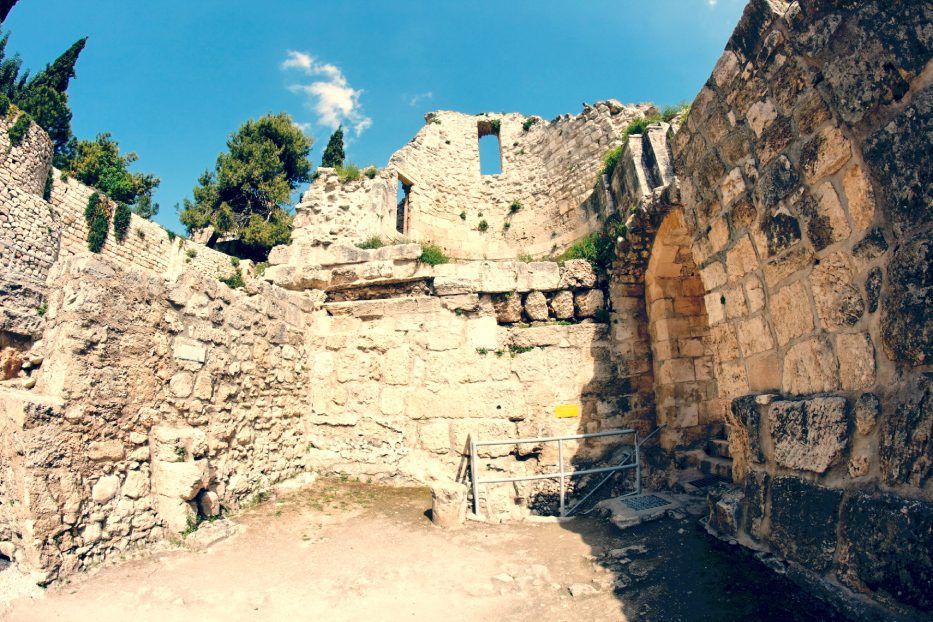
In the mid 1st century CE, Herod Agrippa expanded the city walls, bringing the Asclepieion into the city. When Hadrian rebuilt Jerusalem as Aelia Capitolina, he placed a roadway along the dam and expanded the Asclepieion into a large temple to Asclepius and Serapis.
Byzantine Church
By the fifth century, at least part of the Asclepieion had been converted into or replaced by, a Byzantine church known as the Church of the Probatike (literally, the Church of the Sheep, the pool is called the Probatic or Sheep Pool) and initially dedicated to the Healing of the Paralytic, though from the sixth century associated with the Virgin Mary (the pilgrim Theodosius wrote in De Situ Terrae Sanctae (c. 530) that “next to the Sheep-pool is the church of my Lady Mary”). This reflects a more general movement that appropriated the healing sites of pagan religion and rededicated them to the Virgin Mary. The theory that Empress Eudocia built this church (c. 401–460) is uncertain. It seems more likely to be associated with Juvenal, the bishop of Jerusalem in the mid-5th century. This church was destroyed in 614 by the Persians.
Crusader Churches
After the Crusader conquest of Jerusalem in 1099, a much smaller church was built among the Byzantine-period ruins on the stone dyke separating the two pools, known as the Church of the Paralytic or the Moustier (‘the Monastery’). It was followed by a larger new church erected nearby. This larger church, completed in 1138, was built over the site of a grotto which had (from the fifth or sixth century onwards) been traditionally believed to be the birthplace of Mary, mother of Jesus, and was named for Mary’s mother, Saint Anne. After the conquest of Jerusalem by Saladin in 1187, it was transformed into a Shafi`i fiqh (Islamic law school). Gradually the buildings fell into ruin, becoming a midden (waste dump).
On my private tours, I like to show them all these ruins that till today you can actually see it all!







